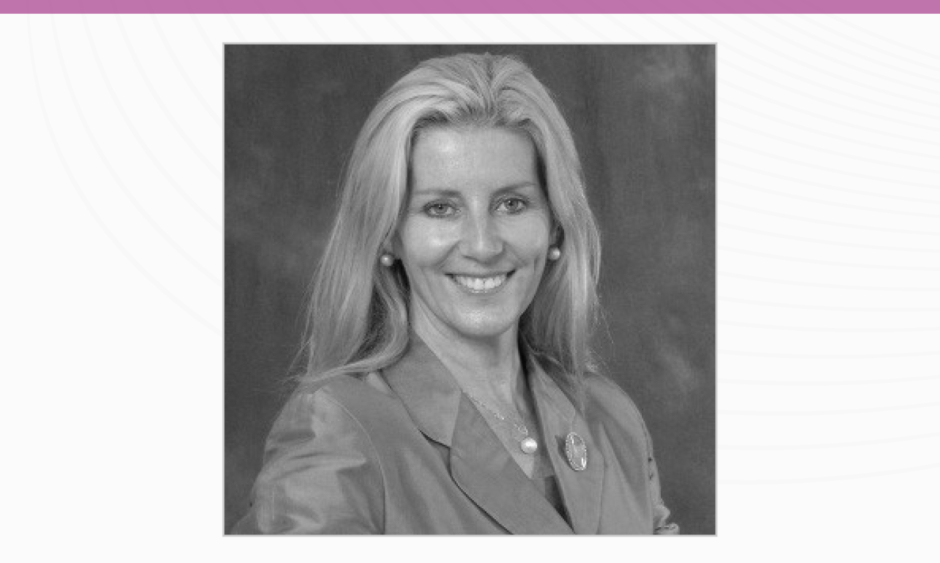Dedee Murrell | Professor and Head, Department of Dermatology, St George Hospital, University of New South Wales, Sydney, Australia; Chair of Communications Committtee, EADV
![]()
What initially sparked your interest in the field of dermatology and led you to continue researching in this area?
When I was a medical student at the University of Oxford in England, UK, I enjoyed most clinical specialties but then I encountered dermatology and, for some reason, seeing diseases on the skin was something I enjoyed very much, as well as the complexity of it. I had always been drawn to clinical pictures in medical books of unusual syndromes. I am someone who wants to know why, so being able to conduct research was appealing as well as, initially, daunting. Furthermore, there were two very inspiring female academics at Oxford then, Fenella Wojnarowska and Sue Burge, who were great role models for me.
Do you think that there are any misconceptions about your specialty?
Yes, for sure. People think of managing skin diseases as ‘dermaholiday’. You sometimes find students or young doctors choosing to rotate in dermatology as they believe it will be a doddle. But then they see how many patients we see and have to diagnose quickly and do a lot of explaining to them about the causes and the various treatments and investigations. If there are patients in hospital to manage as well, after the clinics, they are surprised by how tired they are at the end of a day. Until people see some of the severe drug reactions, blistering diseases, hidradenitis, psoriasis, and eczema, they think it is all about beauty therapy.
You presented a session at the European Academy of Dermatology and Venereology (EADV) 2021 Congress titled ‘Spectrum of bullous diseases’. Have you seen much improvement in the treatment of these diseases during your career as a dermatologist?
The treatment of psoriasis has changed the most in my time as a dermatologist. The treatment for patients with blistering disease has only changed in so far as patients with pemphigus can access rituximab infusions as an adjunct to lower doses of steroids rather than massive doses of prednisone, and patients can sometimes access intravenous Ig for relapsing disease. Fortunately, clinical trials of new, safer, and more convenient treatments for these bullous diseases are finally underway.
You are currently an international EADV Board Member. Could you talk about the ways in which the EADV use their position to impact both clinicians and patients?
I was elected during the EADV board meeting in Paris, 2018, as the first International Board Member and attended my first board meeting in Lugano, Switzerland, the following May. The EADV is very active in advocating for our specialty and our patients at the European Parliament, and with the European Reference Networks (ERNs) and with its EADV Task Forces, which produce and publish the EADV Guidelines such as our EADV Task Force for Autoimmune Blistering Diseases. The recent creation of the patient village at the EADV Congresses has allowed more cross talk between the support groups and dermatologists and EADV. The late breaking sessions at the EADV are extremely popular for dermatologists to see the latest trial and research results to help our patients.
This year’s EADV Congress took a virtual format due to restrictions from the ongoing pandemic. How do you feel COVID-19 has impacted the field of dermatology?
During the pandemic, the EADV was the first major international dermatology congress to run a successful virtual platform and it has changed its in-person education sessions into online lectures. Furthermore, the Journal of the European Academy of Dermatology and Venereology is now one of the leading dermatology journals and its free podcasts have a large following.
Patients with inflammatory skin diseases often flare up when they contract COVID-19 or when vaccinated with the COVID-19 vaccines. Hence, skin manifestations in the form of rashes, which were not there before, or exacerbated rashes, are often a sign of contracting COVID-19. Some skin diseases that increase expression of the receptor for the virus’ spike protein (angiotensin-converting enzyme 2) increase susceptibility to COVID-19. In many hospitals, dermatology clinics were closed during the pandemic, and this has meant delays in the diagnosis of cutaneous carcinoma or melanoma. Some dermatologists were, of course, redeployed during the peak of the pandemic to perform other roles in hospitals.
You are the Co-founder and President of the Australasian Blistering Diseases Foundation (ABDF). What was the mission you set out to achieve when you founded this organisation, and do you feel this has been fulfilled?
In 2006, I co-founded this charity with my then pre-dermatology research fellow, Linda Martin, who has recently been appointed to an endowed position at my university. The ABDF has grown steadily and provides education for Australian patients with both autoimmune and genetic blistering diseases on how to be diagnosed and on treatments. We have education sessions and provide some research support for smaller projects. We have a website1 and are on Twitter.2 The ABDF is also a vehicle through which Australian patients can find out about the new clinical trial opportunities and link to the International Pemphigus & Pemphigoid Foundation (IPPF).3,4
Your personal education and professional experience have involved you travelling to numerous destinations, including the UK, New Zealand, and Sri Lanka. Where do you believe you gained the most experience and do you think that travelling was integral for you to make it to where you are today?
Thank you for this important question. Wherever I have had the opportunity to visit clinics or hospitals in other countries and interact with the dermatologists, it has been very helpful to learn about useful ways of managing patients. The USA was the most influential because I did my formal dermatology residency there, at the University of North Carolina (UNC) at Chapel Hill, USA, where Fenella Wojnarowska had completed her sabbatical with Robert Alan Briggaman. UNC Chapel Hill is an excellent department, with clinician-scientists at the helm, showing you how you can make your own observations and carry out enquiries rather than merely rote learning. Graduates of this programme include Joseph Jorizzo, Steven Feldman, Alan Fleischer, and David Woodley, who have made innovative contributions to dermatology through their own ideas. Medicine will only improve if the doctors keep on observing and asking: “Why?”
I also found it interesting to visit Razi Hospital in Tehran, Iran, a huge hospital run by dermatologists, where there are large sub-specialty clinics and the notes are still written in English, not Farsi. They have published some excellent papers in my area of blistering diseases. Despite the basic facilities in some of the hospitals I taught at in India, Sri Lanka, Malaysia, Vietnam, and the Philippines, as examples, it is the passion of the doctors and nurses that makes the difference to good patient care, not the presence of any fancy new facility.
As an educator, where can we expect to see your focus lie in the coming years?
The past 18 months has been a quick learning curve for me in terms of becoming proficient in how to deliver online lectures and present at meetings remotely. I expect that for some venues where I cannot attend due to the time factor and cost, that some of these virtual lectures will persist, even though I much prefer delivering talks in person.
I would like to visit more countries where dermatology services and knowledge are lacking to help educate the local clinical staff and see patients with them. The Francophone dermatology meeting, for example, in Tunisia, has already been postponed for 2 years and I am looking forward to presenting again, in French, and visiting facilities in the Maghreb region. I hope to attend all the EADV symposia and congresses in person in the coming years. I haven’t been to Ljubljiana since flying to Croatia for my honeymoon, so that will be one to put on the calendar for next year.
Are there any innovations on the horizon that you feel are particularly noteworthy in the field of dermatology?
For western medicine, the information technology revolution in image analysis used for assessing pigmented lesions, using 3D camera systems with digital dermoscopy such as the VECTRA 3D, is a great revolution. The software can compare the whole skin at different time points and provide dermatologists with images of lesions that are new or have changed. This means earlier diagnosis of melanoma.
The other innovation is the discoveries in the labs of increased cytokines or receptors in various skin diseases and the development of biological therapies (monoclonal antibodies or small molecules) to inhibit these. Previously, I was involved in the lab side of this translational medicine. Now, I am involved in designing the clinical studies and conducting them. These treatments are making huge impacts on chronic severe skin diseases and alopecia.








